In a world where most of us are used to seeing dogs, cats, and the occasional squirrel, it’s easy to forget that our planet is home to some truly bizarre animals. Some of these creatures are so strange that they could easily be mistaken for mythical creatures or alien life forms. Their unique features and behaviors make you question if Mother Nature was having a bit of fun when she created them. So, grab a snack, get comfortable, and join me on this wild tour of 14 weird animals that push the boundaries of what we think is possible. I promise you’ll be amazed and perhaps a little bewildered by what you discover.
1. The Aye-Aye
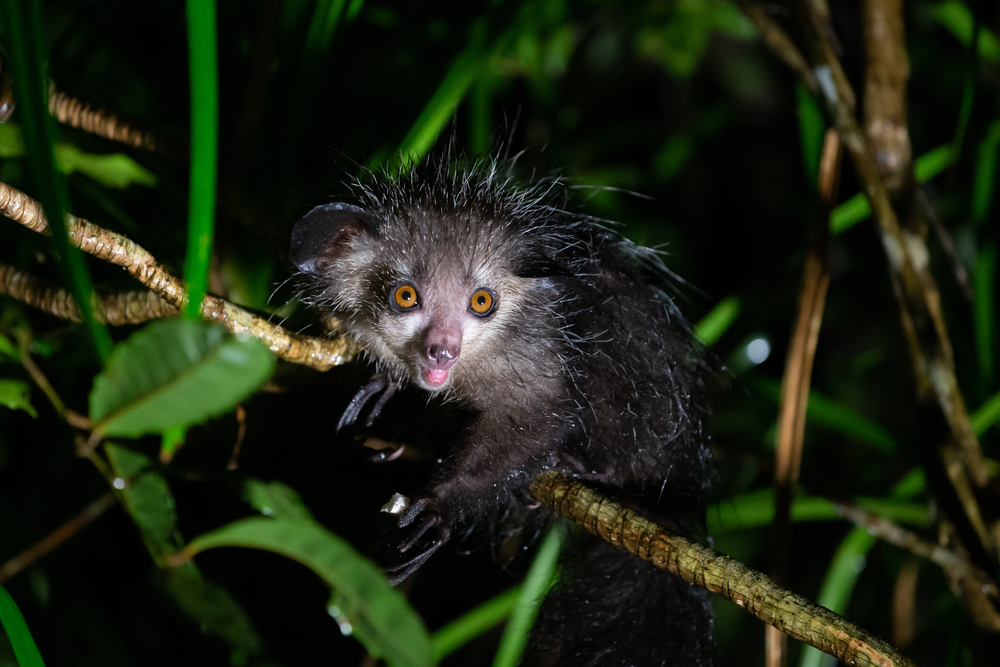
The aye-aye is a type of lemur found only on the island of Madagascar, and it might just be one of the most peculiar primates on Earth. With its large, bat-like ears and long, spindly fingers, it looks like something out of a fantasy novel. Its middle finger is especially intriguing and acts like a tool or a wand to extract insects from tree bark. People once believed the aye-aye was an omen of bad luck, which led to many being killed on sight. Thankfully, conservation efforts are changing this misconception.
These nocturnal creatures have a taste for wood-boring larvae, which they locate by tapping on trees and listening for hollow sounds. Their unique feeding method involves gnawing small holes in the wood and fishing out insects with that elongated digit. Besides bugs, aye-ayes also enjoy munching on fruits, nectar, and seeds. Their appearance might be unsettling to some, but to others, it’s a fascinating example of nature’s creativity. The aye-aye’s adaptations are a reminder that survival in the wild often requires some unusual tricks.
2. The Blobfish
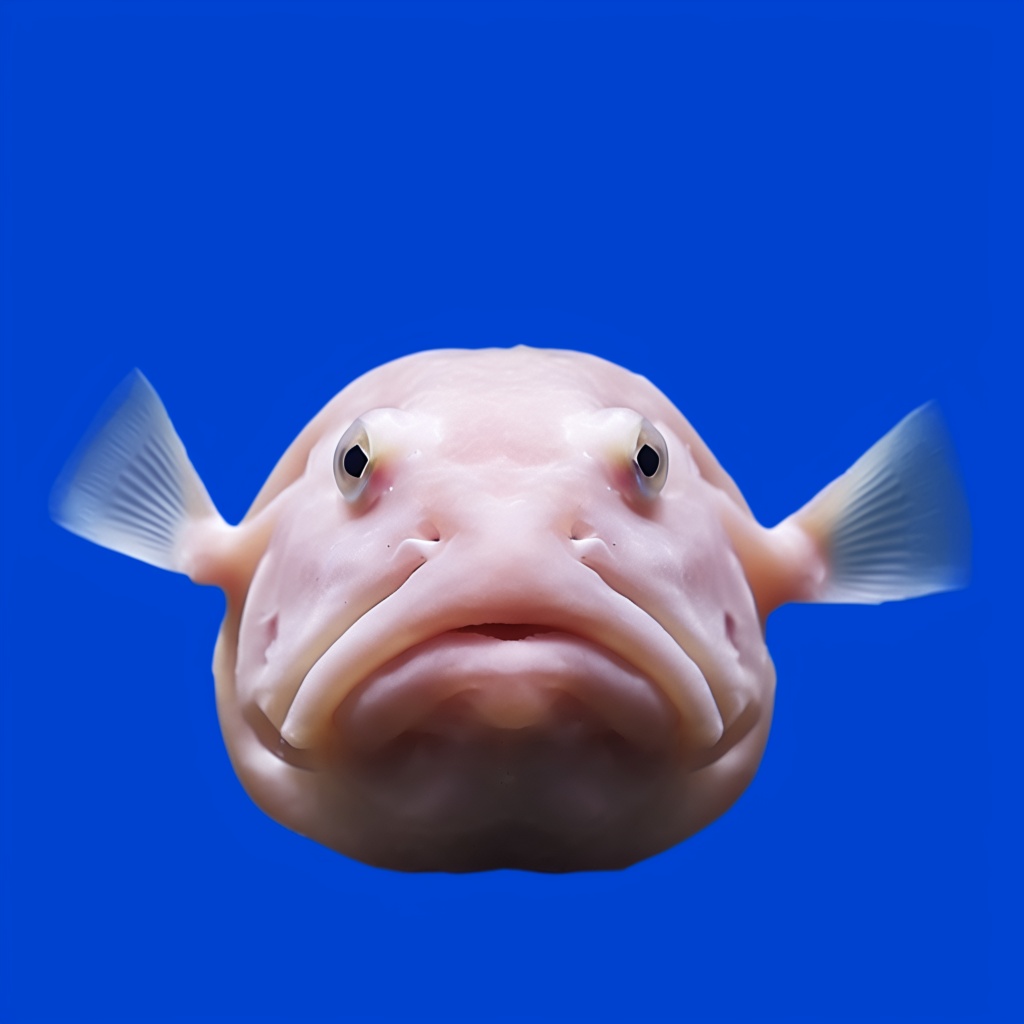
The blobfish, often dubbed the “world’s ugliest animal,” is a deep-sea dweller that seems to defy conventional beauty standards. Living off the coast of Australia and New Zealand, it resides at depths where the pressure is dozens of times higher than at the surface. When it’s in its natural habitat, the blobfish looks quite ordinary, thanks to the surrounding water pressure that keeps its shape intact. However, once it’s brought to the surface, it becomes a gelatinous mass because its body is adapted to the high-pressure environment below. This transformation has made it a poster child for unattractive marine life.
Blobfish don’t have much muscle, relying on their buoyant bodies to float just above the seabed and passively consume whatever drifts by. They feed on edible matter like crabs and sea urchins, which they don’t have to chase down due to their lazy nature. Despite their less-than-flattering appearance, blobfish play a crucial role in ocean ecosystems. Their survival is currently threatened by deep-sea trawling, which damages the habitats they call home. Protecting these creatures is as important as saving any other marine species, even if they won’t win any beauty contests.
3. The Axolotl
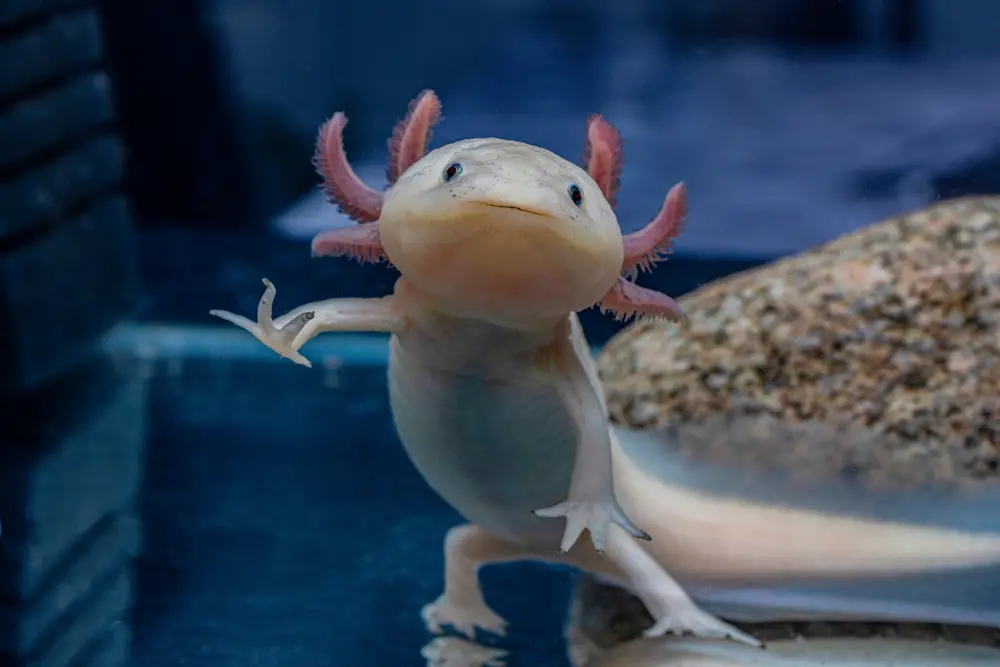
Meet the axolotl, a type of salamander with a permanent smile and an astonishing ability to regenerate its body parts. Native to the lakes of Mexico City, this animal has captured the hearts of many due to its adorable appearance and unique characteristics. Unlike other amphibians, axolotls retain their larval features throughout their lives, a phenomenon known as neoteny. Their feathery external gills and perpetually juvenile appearance make them look like underwater puppies. This, combined with their pinkish hue, makes them quite the spectacle.
Axolotls are capable of regenerating not just limbs but also spinal cords and parts of their hearts and brains. This has made them incredibly valuable to scientific research, particularly in studies related to regenerative medicine. Unfortunately, axolotls are critically endangered in the wild due to habitat destruction and pollution. Conservation efforts are underway, but for now, they’re more commonly found in labs and aquariums than in their native habitats. Their plight serves as a reminder of the delicate balance between human activity and the natural world.
4. The Narwhal
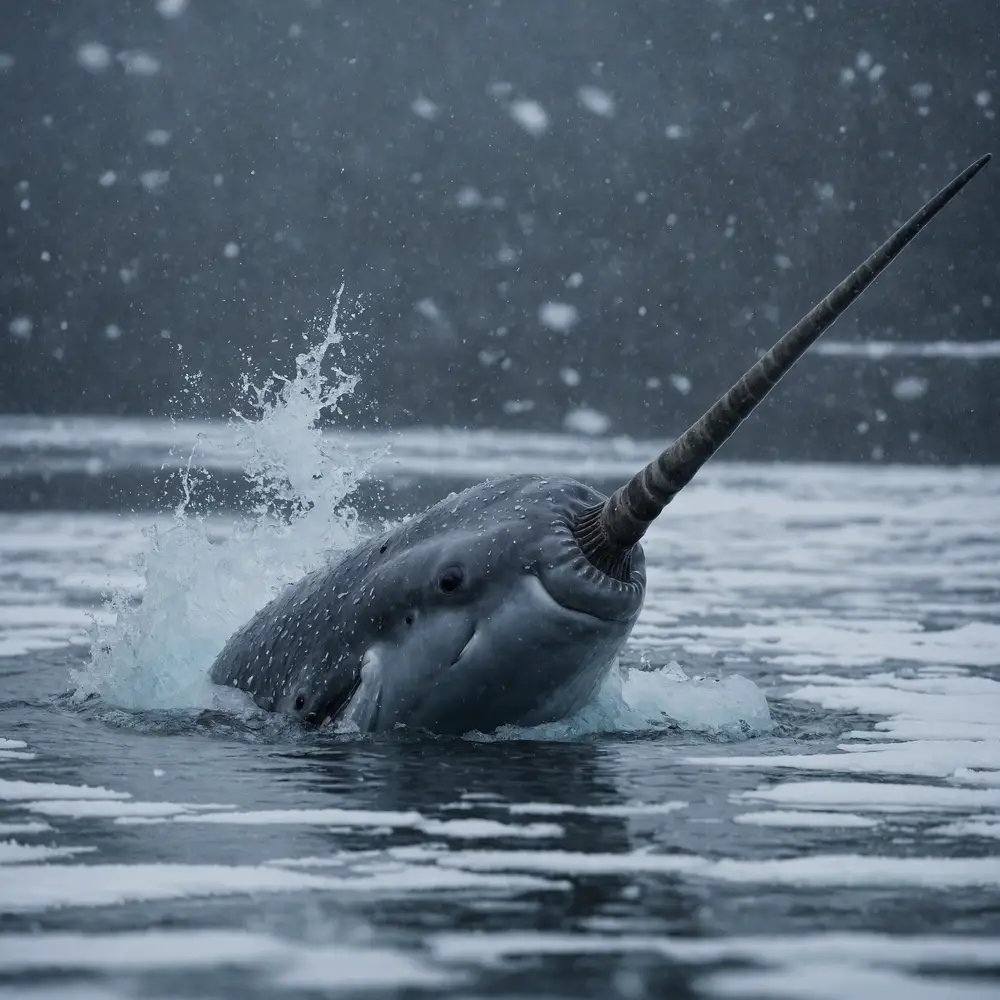
Often referred to as the “unicorn of the sea,” the narwhal is known for its long, spiral tusk that can reach up to 10 feet in length. This tusk is actually an elongated upper left canine tooth, which grows through the narwhal’s upper lip. Found in the icy waters of the Arctic, narwhals are elusive creatures that have puzzled researchers for years. The purpose of their tusk has been a topic of debate, with theories ranging from mating rituals to social dominance and sensory organ functions. What is clear, though, is that this tusk adds to their mystique.
Narwhals travel in pods and are known for their deep dives, sometimes reaching depths of over a mile in search of fish and squid. These dives can last up to 25 minutes, showcasing the narwhal’s incredible adaptation to its environment. Climate change and increased human activity in the Arctic pose threats to their survival, prompting conservationists to keep a close eye on their populations. Despite their elusive nature, narwhals have captured the imagination of people worldwide, inspiring myths and legends. Their uniqueness is a testament to evolution’s unpredictability and creativity.
5. The Platypus
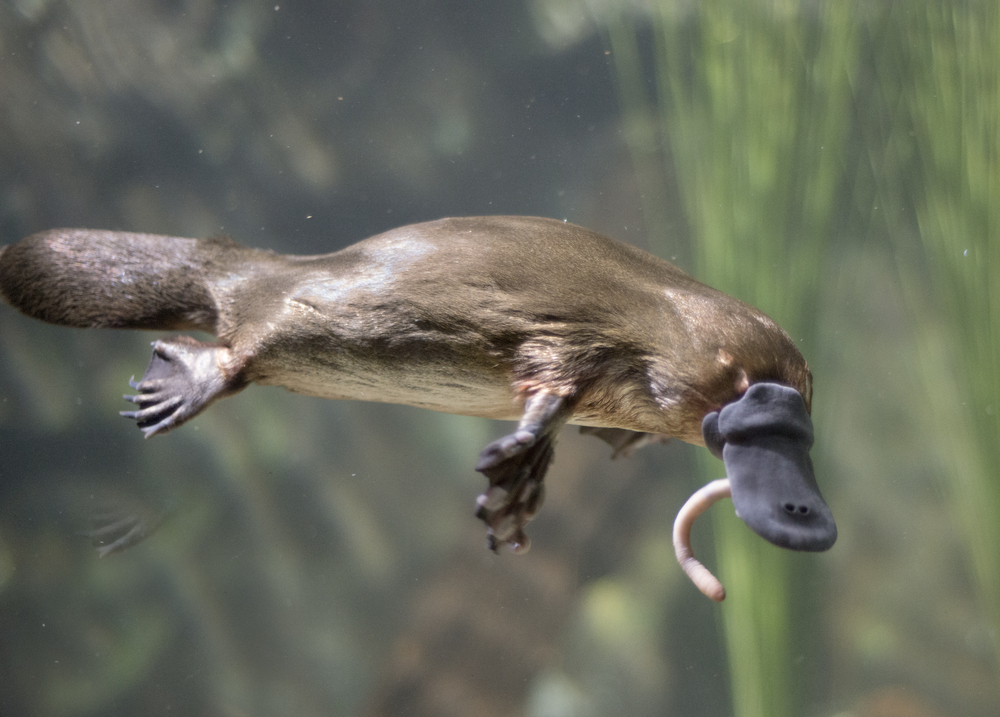
The platypus is an animal so strange that when it was first discovered, British scientists thought it was a hoax. Native to eastern Australia, this egg-laying mammal has a bill like a duck, a tail like a beaver, and webbed feet like an otter. It’s one of the few venomous mammals, with males possessing venomous spurs on their hind legs. This venom isn’t lethal to humans but can cause significant pain and swelling. The platypus’s unique blend of features makes it one of nature’s most intriguing puzzles.
Platypuses are excellent swimmers, using their webbed feet to navigate rivers and streams with ease. They hunt underwater, using their bills to sense the electric fields generated by their prey, such as insects and small crustaceans. Despite their aquatic abilities, they spend a good amount of time on land, especially when it’s time to lay eggs. Platypuses are currently listed as near threatened, with habitat destruction and climate change posing significant risks to their populations. These fascinating creatures remind us of the diversity and wonder of the natural world.
6. The Shoebill
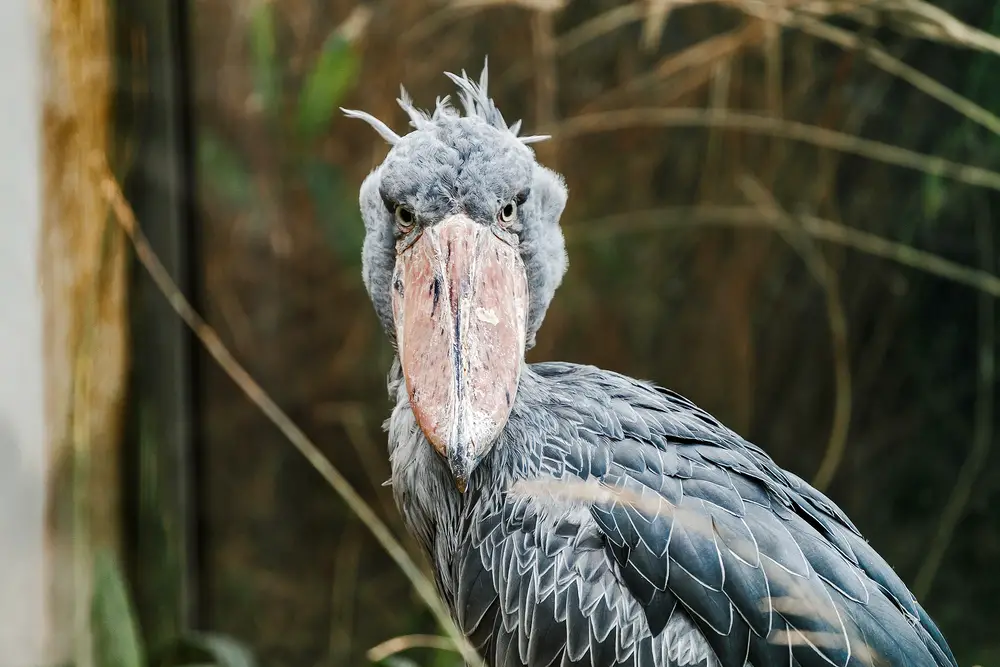
The shoebill, often nicknamed the “whale-headed stork,” is a large bird that can be found in the swamps and marshes of East Africa. Its most striking feature is its enormous, shoe-shaped bill, which it uses to catch fish, frogs, and even small reptiles. Despite its somewhat comical appearance, the shoebill is a skilled and patient hunter, often standing still for hours before striking at its prey. This prehistoric-looking bird can grow up to five feet tall, making it one of the tallest birds in the world. Its deep, booming call is equally impressive and can be heard over long distances.
Shoebills are solitary creatures, preferring to hunt alone rather than in groups. Their hunting strategy involves waiting motionless until an unsuspecting prey comes within reach. The shoebill’s slow, deliberate movements make it an efficient predator, often surprising its meals with lightning-fast strikes. Due to habitat loss and human disturbance, shoebills are considered vulnerable, and conservation efforts are crucial to their survival. Their unique appearance and behaviors have made them a favorite among bird enthusiasts and have sparked a keen interest in preserving their habitats.
7. The Saiga Antelope
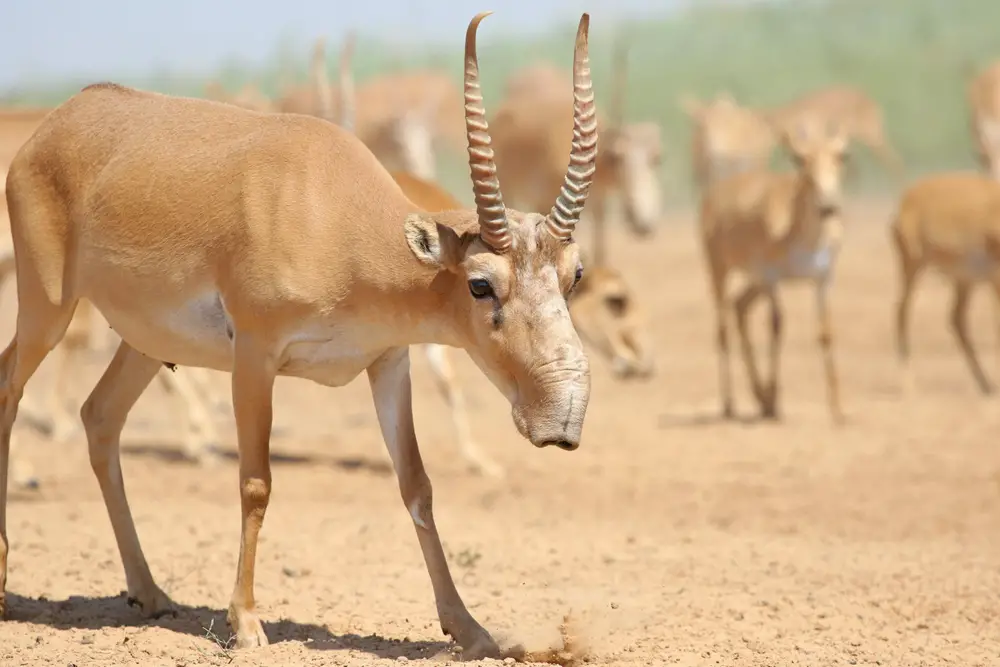
With its oversized nose and unique appearance, the saiga antelope looks like it belongs in a Dr. Seuss book. Native to the steppes of Central Asia, this critically endangered species has a bulbous, flexible nose that helps filter dust and regulate body temperature. Once abundant, saiga populations have plummeted due to poaching and disease, with conservationists working tirelessly to protect them. Their large noses are also believed to amplify mating calls, making them an essential part of the saiga’s courtship rituals. These antelopes are remarkable for their resilience in harsh environments.
Saigas migrate over vast distances, moving in herds that can number thousands. They graze on grasses and herbs, playing a vital role in their ecosystems by maintaining grassland health. The plight of the saiga highlights the impact of human activity on wildlife, with poaching driven by the demand for their horns in traditional medicine. Conservation efforts include anti-poaching initiatives and habitat restoration projects, aiming to stabilize and increase saiga populations. The saiga’s story is a poignant reminder of the importance of protecting the world’s unique and irreplaceable species.
8. The Anglerfish
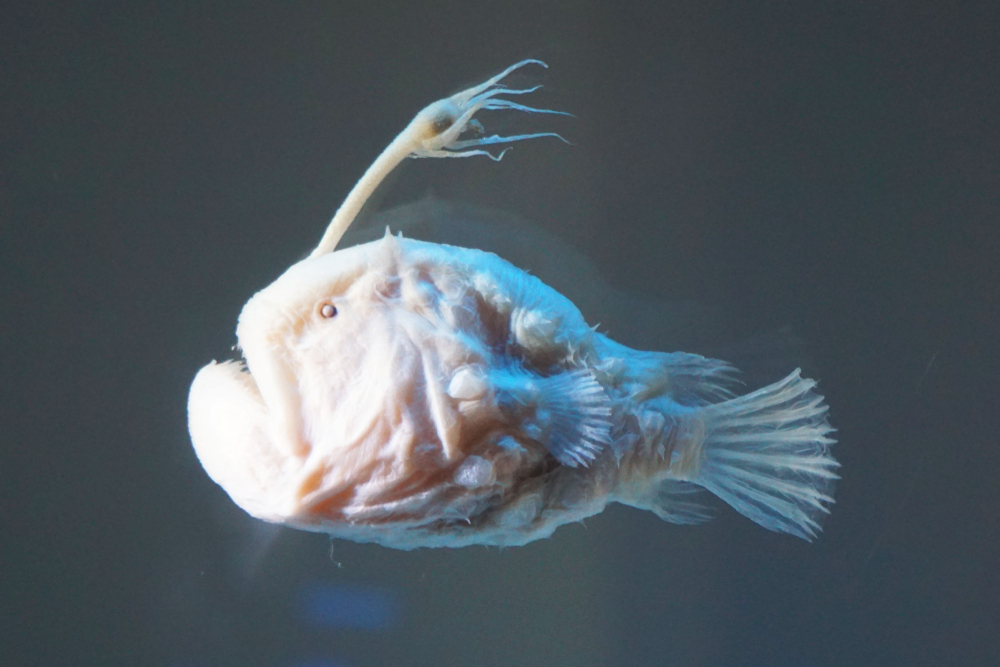
Deep in the dark abyss of the ocean, the anglerfish reigns as one of the most bizarre-looking creatures known to science. Its most distinctive feature is the bioluminescent lure that dangles from its head, which it uses to attract unsuspecting prey. Found at depths where sunlight barely penetrates, anglerfish are masters of deception, luring their next meal with an enticing glow. Their jagged teeth and expandable stomachs allow them to consume prey almost twice their size. Despite their menacing appearance, anglerfish lead solitary lives, only coming together to mate.
The mating process for anglerfish is as strange as the fish itself. The much smaller male anglerfish attaches itself to the female, eventually fusing to her body and becoming a permanent parasite. This fusion allows the male to receive nutrients, while the female benefits from a constant supply of sperm. Anglerfish showcase nature’s resourcefulness in adapting to extreme environments. While they may seem otherworldly, their existence underscores the diversity of life in the ocean’s depths.
9. The Okapi
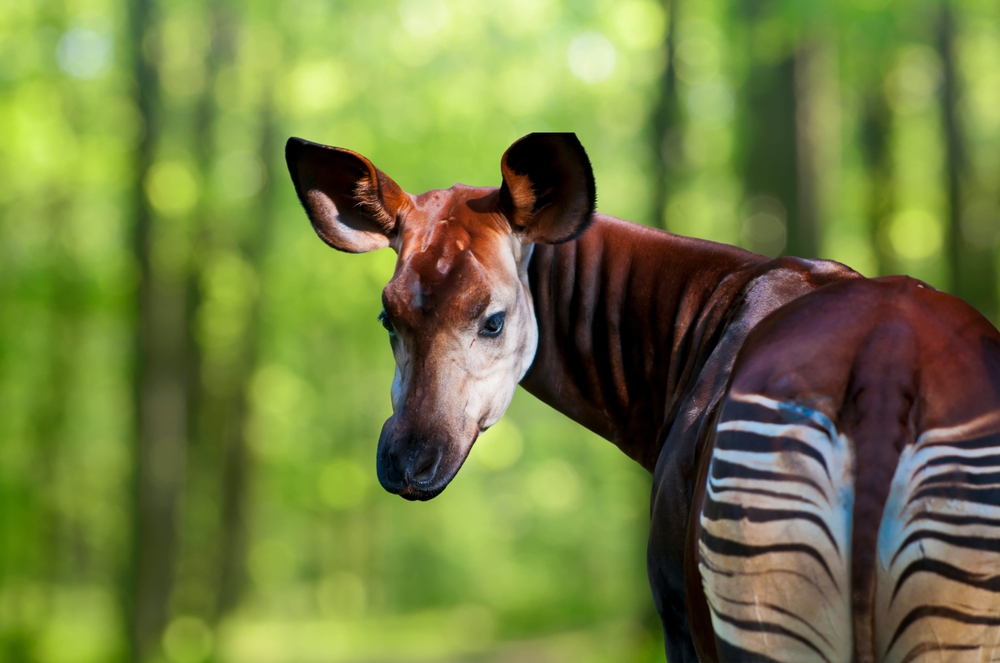
Often mistaken for a relative of the zebra due to its striped legs, the okapi is actually more closely related to the giraffe. Native to the dense rainforests of the Democratic Republic of Congo, this elusive mammal is a master of camouflage. Its unique coat pattern helps it blend into the dappled forest light, evading predators and human observers alike. Despite being known to the local people for centuries, the okapi remained unknown to the Western world until the early 20th century. Its discovery was met with fascination and excitement, adding a new chapter to the story of African wildlife.
Okapis feed on leaves, fruits, and fungi, using their long, prehensile tongues to strip branches with ease. Their solitary nature and secretive habits made studying them in the wild a challenge for researchers. Today, okapis face threats from habitat loss and poaching, prompting conservationists to protect their habitats and ensure their survival. The okapi’s story is one of adaptation and mystery, a testament to the wonders that still exist in Earth’s unexplored corners. It charms all who are fortunate enough to glimpse its stripes through the underbrush.
10. The Glaucus Atlanticus
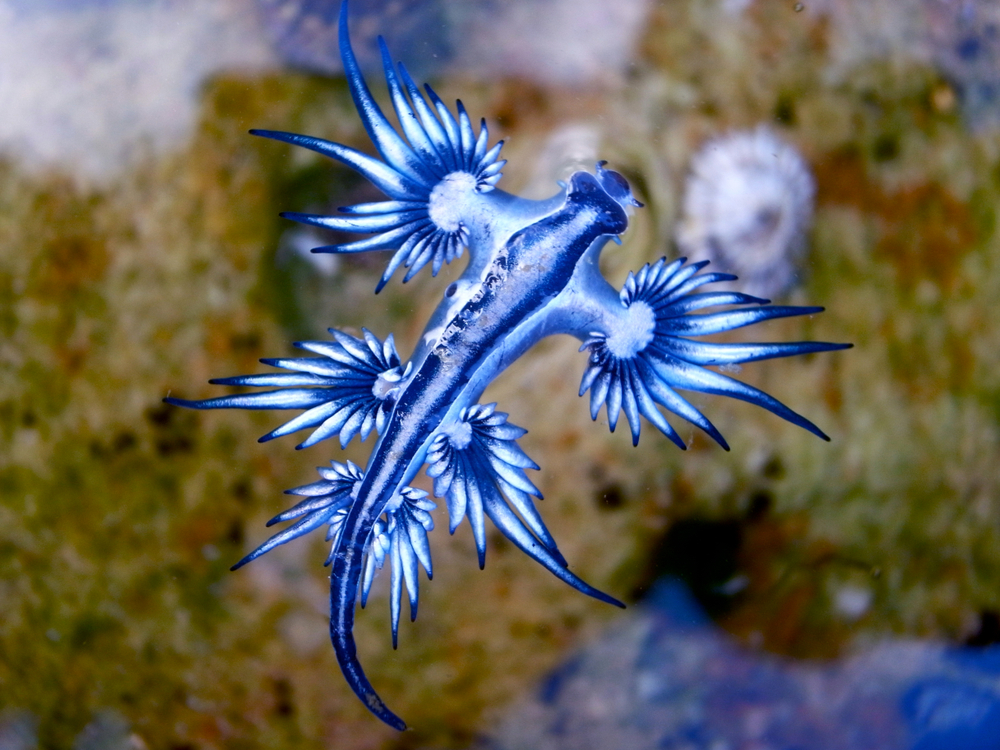
The glaucus atlanticus, often called the “blue dragon,” is a small but stunningly beautiful sea slug found in warm ocean waters. Its striking blue and silver coloration serves as both camouflage against the ocean’s surface and as a warning to predators. What makes this creature truly fascinating is its ability to ingest venom from its prey, like the Portuguese man o’ war, and store it in its own tissues. This makes the blue dragon a formidable opponent, capable of delivering a more potent sting than the creatures it preys upon. It’s a prime example of nature’s ingenuity in the survival game.
The glaucus atlanticus floats upside down, using the ocean’s surface tension and air-filled sacs for buoyancy. It feeds on other venomous sea creatures by grasping them with its tiny jaws, demonstrating both skill and daring. Despite its small size, the blue dragon’s vivid appearance and potent sting have captured the attention of marine enthusiasts worldwide. While encounters are rare, they serve as a reminder of the ocean’s hidden wonders and the incredible adaptations of its inhabitants. The glaucus atlanticus showcases the beauty and danger that often coexist in nature.
11. The Dumbo Octopus
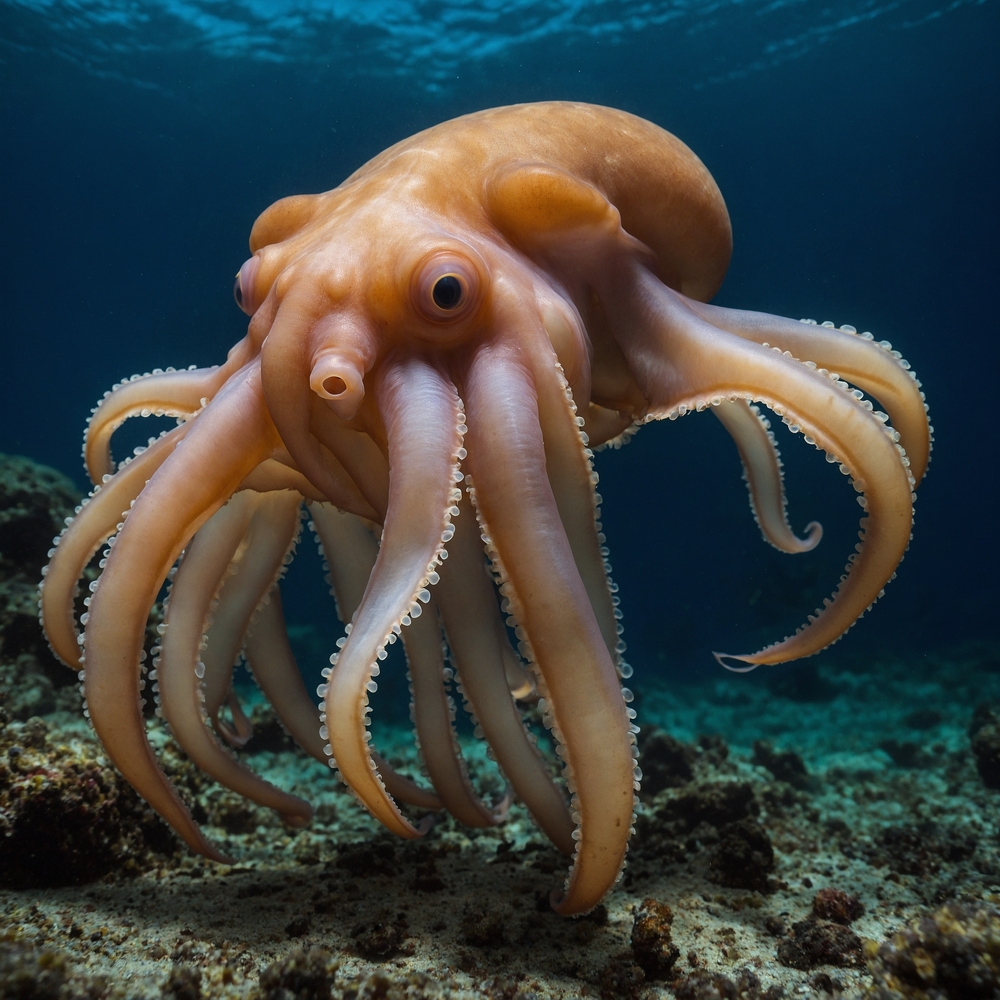
Named after Disney’s flying elephant, the dumbo octopus is a deep-sea dweller with ear-like fins that resemble those of Dumbo. These charming cephalopods can be found at depths of up to 13,000 feet, making them one of the deepest-living octopus species. Their ear-like fins act as flippers, helping them glide gracefully through the water. Unlike other octopuses, dumbo octopuses don’t have an ink sac, as their deep-sea environment is free from predators that would necessitate such a defense. Their unique appearance and gentle demeanor have earned them a special place in the hearts of ocean enthusiasts.
Dumbo octopuses feed on small invertebrates, using their tentacles to capture prey and bring it to their mouths. Their soft, gelatinous bodies are well-adapted to the high-pressure environment of the ocean’s depths. Despite their remote habitat, dumbo octopuses have become a symbol of the mysterious and unexplored world beneath the waves. Their existence reminds us of the vastness of the ocean and the myriad forms life can take. Protecting these deep-sea environments is crucial to preserving the unique creatures that call them home.
12. The Gerenuk
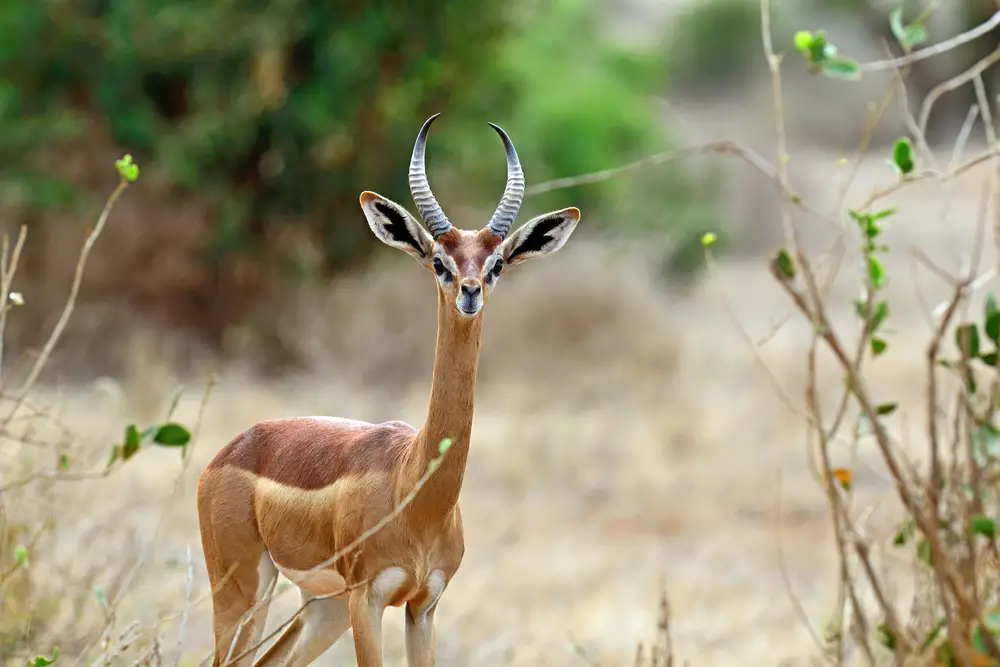
The gerenuk, or “giraffe gazelle,” is a long-necked antelope found in the dry shrublands of East Africa. Its elongated neck and legs enable it to reach leaves on tall bushes and trees, much like a giraffe. This feeding strategy allows gerenuks to survive in arid environments where other herbivores might struggle. They can even stand on their hind legs to reach higher foliage, showcasing incredible balance and agility. Unlike many antelope species, gerenuks don’t require much water, obtaining most of their moisture from the plants they consume.
Gerenuks are known for their slender, graceful appearance and large, expressive eyes. They live in small herds, often led by a dominant female, and communicate through a series of snorts and whistles. Although they are not currently endangered, habitat loss and hunting pose potential threats to their populations. Conservation efforts focus on protecting their habitats and ensuring sustainable coexistence with local communities. The gerenuk’s distinctive features and behaviors highlight the diversity of adaptations among Africa’s wildlife.
13. The Tarsier
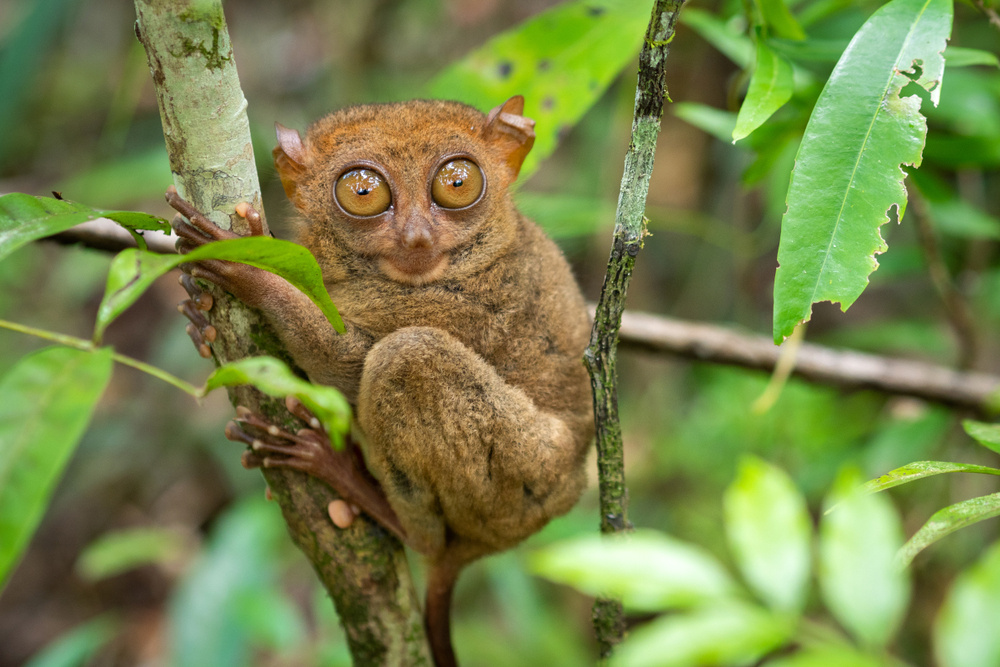
With its enormous eyes and tiny frame, the tarsier looks like a creature straight out of a fantasy story. These small primates reside in the forests of Southeast Asia, where they are known for their incredible leaping abilities. Tarsiers are primarily nocturnal, using their large eyes to navigate the dark with ease. Their necks can rotate almost 180 degrees, allowing them to spot potential prey or predators without moving their bodies. Despite their small size, tarsiers are fierce hunters, feeding on insects and small vertebrates.
Tarsiers communicate through a variety of vocalizations, including high-pitched calls that are often inaudible to the human ear. They are social animals, living in small family groups and forming strong bonds with their offspring. Unfortunately, habitat destruction and the illegal pet trade have threatened tarsier populations, prompting conservationists to take action. Protecting their forest habitats and raising awareness about their plight are key components of conservation efforts. The tarsier’s enchanting appearance and unique behaviors make it a symbol of the incredible biodiversity found in tropical forests.
14. The Kiwi
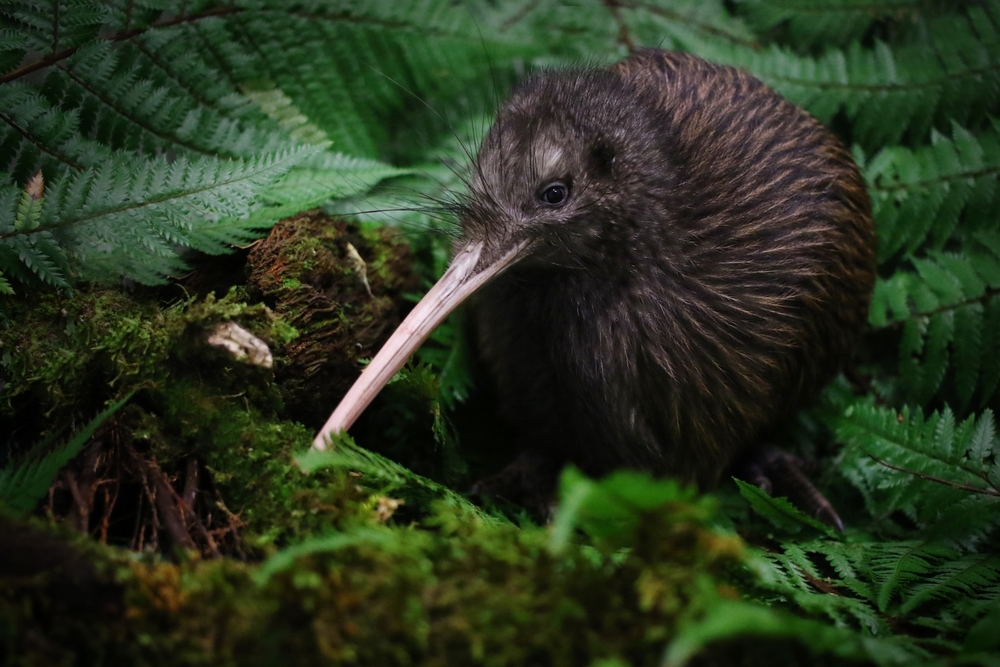
The kiwi, New Zealand’s beloved national bird, is a flightless bird with a distinct appearance and unique behavior. Unlike most birds, kiwis have nostrils at the end of their long beaks, which they use to sniff out insects and worms underground. Kiwis are nocturnal creatures, spending their nights foraging for food and their days hidden in burrows. Their shaggy, hair-like feathers and strong legs make them well-suited to life on the forest floor. Despite their awkward appearance, kiwis are agile runners and can defend themselves if necessary.
These solitary birds lay unusually large eggs, often taking up a significant portion of the female’s body. Kiwis are fiercely protective of their nests, with both parents playing a role in incubation and chick rearing. Habitat destruction, introduced predators, and human activity have led to declining kiwi populations, making conservation efforts critical. Programs focused on predator control and habitat restoration aim to ensure the survival of these iconic birds. The kiwi’s unique characteristics and cultural significance make it a treasured symbol of New Zealand’s natural heritage.
